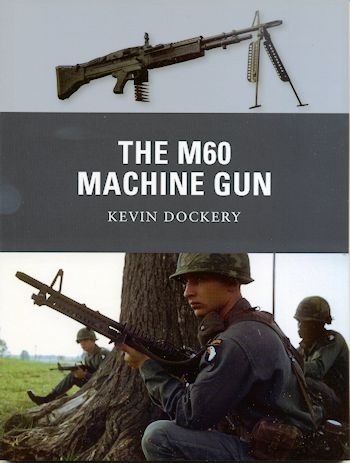 With the
end of WWII, it was realized that a new light machine gun (LMG) was required to
replace both the 30mm gun and the B.A.R. It is not surprising that German light
machine guns such as the MG 34/42 and the FG 42 were carefully studied as they
were considered to be excellent weapons.
With the
end of WWII, it was realized that a new light machine gun (LMG) was required to
replace both the 30mm gun and the B.A.R. It is not surprising that German light
machine guns such as the MG 34/42 and the FG 42 were carefully studied as they
were considered to be excellent weapons.
Of course, every weapon has its good points and its
negative aspects, so it was hoped that the new gun would incorporate mostly good
points, so several prototype guns were developed that included the T-44, T-52,
and T-161, each design getting closer and closer to what would eventually become
the M-60. Eventually, a later design of the T-161 was chosen. It was important
to the Army of the time that the gun fire a 'full size' cartridge, and so the
NATO 7.62 round was chosen for both its good ballistics and its heavy hitting
power.
Despite being a LMG, the M-60 was capable of being
operated by a single man, though the greatest accuracy was when there was an
assistant feeding the belt and another bringing up ammunition. Like similar
German guns of WWII, the M-60 was equipped with a bipod and could also be
operated on a tripod. The M-60 gunner needed to be a pretty strong individual as
the gun had quite a kick and was also relatively heavy, especially when compared
to the M-14 and later M-16 that was carried by most infantrymen. However, it had
the big plus of being quite mobile without the tripod so the operator could fire
from a location and when it looked like a good time to move, could easily carry
the gun with him.
The weight of the gun and its tendancy to jam if the
rounds were not kept clean did not endear it to some, but those who were capable
and well trained found it to be an outstanding weapon. It was much used during
Vietnam and often the presence of the gun meant the difference between staying
alive or not. The book has several specific incidents in it where the M-60 not
only saved the situation, but also the lives of many American troops. The gun
was improved as time went on and is still in use with the latest version having
an additional handle like an early Thompson to help the gunner shoulder or hip
fire the weapon. Though replaced for the most part by the M-249 SAW, the M-60 is
still in production for other nations and will remain a viable weapon for many
years to come.
The author does a superb job of giving the background,
development and use of the M-60 over the years. Incorporating superb photos and
some nicely done drawings and artwork, the book gives the reader a complete
story of this important weapon. It was a book from which I learned quite a lot
and one I can easily recommend to you.
April 2013
For more on the complete line of Osprey books,
visit www.ospreypublishing.com
or contact them at Osprey Direct, PO Box 140, Wellingborough, Northants,
NN8 2FA, UK. In the US, it is
Osprey Direct at 44-02 23rd St, Suite 219, Long Island City, NY 11101., where you can
get a catalogue of available books.
If you would like your product reviewed fairly and quickly, please
contact
me or see other details in the Note to
Contributors.
 With the
end of WWII, it was realized that a new light machine gun (LMG) was required to
replace both the 30mm gun and the B.A.R. It is not surprising that German light
machine guns such as the MG 34/42 and the FG 42 were carefully studied as they
were considered to be excellent weapons.
With the
end of WWII, it was realized that a new light machine gun (LMG) was required to
replace both the 30mm gun and the B.A.R. It is not surprising that German light
machine guns such as the MG 34/42 and the FG 42 were carefully studied as they
were considered to be excellent weapons.